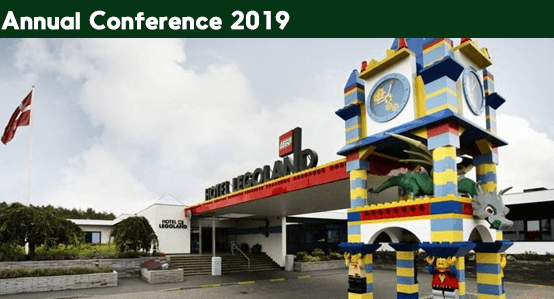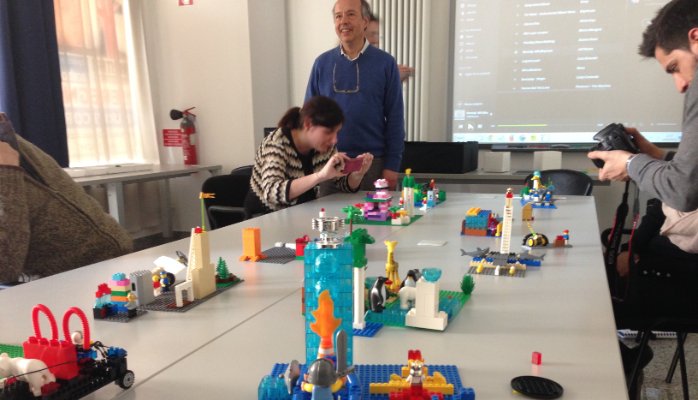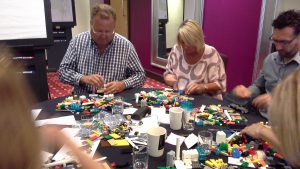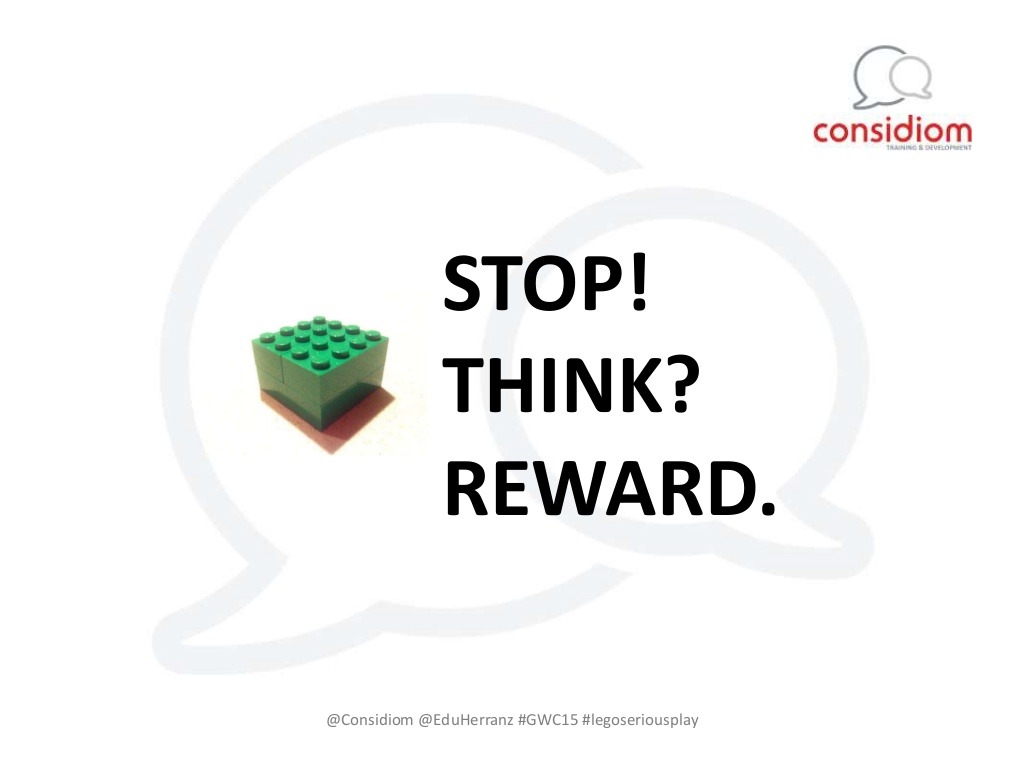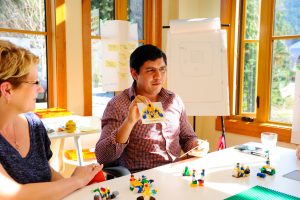October 2, 2015
How I Have Been Practicing Processes in Recent Agile Workshops
During the last 12 months, I participated in three inspiring workshops–I enjoyed all of them:
- The Product Owner Dojo by Catherine Louis and Stefan Haas
- The Lean Change Management Workshop by Jason Little and most recently…
- …the Certified ScrumMaster (CSM) training by Andrea Tomasini of agile42
All of those agile workshops used LEGO® more or less heavily as a training ground to build a “product”, for example, to practice basic Scrum techniques such as organizing and running a sprint.
So, I was building airports…
…and ski resorts:

The picture is courtesy of agile42.com
I also built a duck—the most memorable artifact in my eyes:

Recommended for YouWebcast: The Lead Scoring Equation: Behavior + Demographics = Customers
The duck was an amazing experience, given that the six identical pieces provided to each participant never resulted in the same duck being built twice.
The Success of LEGO® Serious Play® as an Educational Tool
I guess this approach has something to do with the huge success surrounding the LEGO® Serious Play® concept, “an innovative process designed to enhance innovation and business performance. Based on research which shows that this kind of hands-on, minds-on learning produces a deeper, more meaningful understanding of the world and its possibilities…”.
LEGO® Serious Play® has gained a lot of traction. There is by now even a certification for facilitators available – the obvious sign that corporate customers are driving the demand.
Don’t get me wrong, I think LEGO® Serious Play® is a brilliant diversification move for a toy manufacturer, particularly given the service concept included. Not just selling a kit once, but renting it repeatedly to corporate clients instead is a much more favorable business. Additionally, it is a valuable touch-point to Christmas budgets decision-makers, aka moms and dads.
Why This Form of Gamification Is a Fad, Not a Trend
However, what is bothering me utilizing LEGO® to practice agile software development processes is the following:
- LEGO® is too abstract: Most of the participants of the agile workshops mentioned before are professionals from the software industry. Building a ski resort with LEGO® is only remotely related to the various challenges that product people–for example engineers, UX/UI designers, or product managers–are facing.
- LEGO® is not being taken seriously by workshop attendees: Every product building simulation based on LEGO® I have been participating in so far ended up in a frantic race against the time-box. In the end, anything “created” was accepted, no sprint ever failed. Value? No one cared. Planning? Hey, there is no—as we all know—planning in Agile, right?
- LEGO® is not trust building: Imagine the following conversation happening after a 2-day-workshop: “Boss: What did you learn at the workshop? Participant: We build an airport with LEGO®. Boss: At $ 1,500 expenses—tell me, what’s in for the company?”.
If an organization starts venturing out into the Agile world, the biggest challenge is always trust. To my experience, very few stakeholders are willing to entrust their personal careers to other people for the benefit of the doubt, given the magnitude of their perceived loss of control. If an organization wants be successful at the Agile transition, it all starts with the stakeholders’ belief that there will be a (also personal) return on investment for them.
And my gut feeling is that, no matter what LEGO® artifact you’ll be building during a workshop, it will always generate less trust than any clickable prototype of a new app. (See also: Gamification Is Either Infantile Or Manipulative by Steve Fenton.)
Substituting LEGO® with Rapid Prototyping
All those issues are the reason, that I won’t use LEGO® in workshops anymore. Instead, workshop participants will be building a simple, yet clickable and hence user-test ready prototype of an app with Marvel, one of the most advanced prototyping tools.
There is a good introductory video by Pablo Stanley on Marvel, that shows how easily you can build something meaningful while practicing Agile processes:
What is Your Take on Gamification of Agile Workshops with LEGO®
What is your opinion on LEGO®? Why would you choose it over building hands-on, clickable prototypes? Please let me know, I am curious to learn from your experience.
Trademark notice: LEGO®, the LEGO® logo, the Brick, DUPLO®, and MINDSTORMS® are trademarks of the LEGO® Group. ©2012 The LEGO® Group. (You can find further copyright information here.)
Author: Stefan Wolpers
The author has 20+ years of experience in product management and has been coaching companies in agile methodologies for 5+ years. (Scrum, Lean Startup, Lean Change, CSPO, CSM). He’s developed B2C as well as B2B software, mainly for startups, including a former Google subsidiary. He’s founder of @Snippet42

